Table of Contents
In this article, let’s talk about a fascinating and little-known superfood: Ragi/Finger Millet. Also, we will be discussing finger millet nutrition content and health benefits. Make sure to read it till the end.
Finger Millet is a widely grown cereal crop in Asia and Africa. Initially, it originated in East Africa and came to India around 2000 BCE. Ragi is the Hindi name, Ragi in English is finger millet, and in Uttarakhand and Kumuan region, it is called Mandua or Koda.
Finger Millet crops can be cultivated throughout the year and are grown on a higher elevation about 500 to 2400 m above sea level. It has a very high heat tolerance and drought tolerance, and you can store it for a very long time.
In the old times, it was called poor’s food. However, it is gaining popularity nowadays, thanks to finger millet nutrition profile and low-fat content. It is a very famous cereal among health-conscious people and people on dieting.
Let’s talk about the finger millet nutrition content and health benefits in detail.
Koda/Mandua in Uttarakhand
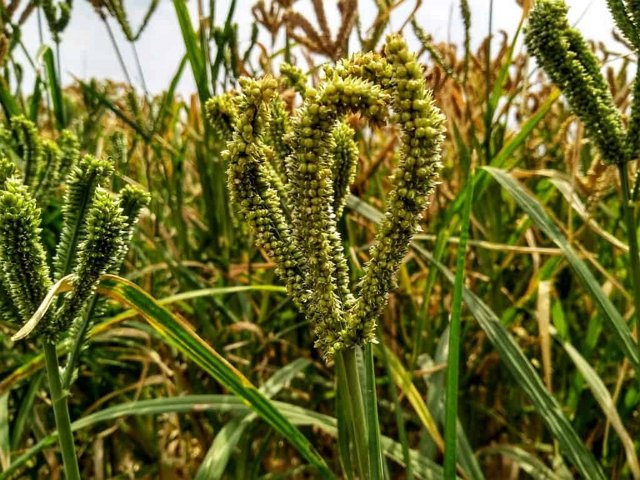
In Uttarakhand, Koda/Mandua is the local name for Finger Millet. Koda/Mandua is a regular part of the diet regime in Uttarakhand. No wonder this is why people of Uttarakhand are physically fit and hardly fall ill. Finger Millet/Mandua is grown in Uttarakhand for centuries. With increasing awareness of finger millet nutrition content, the people of Uttarakhand are putting enormous efforts into its cultivation.
If you visit Uttarakhand, you can have some famous finger millet preparations like Mandua ki Roti (Koda ki roti) with Ghee and Gur (Jaggery) and Koda ki Baadi.
You can buy Finger millet flour online through the link given below:
Finger Millet Nutrition Content- Ultimate Super Food with Enormous Health Benefits
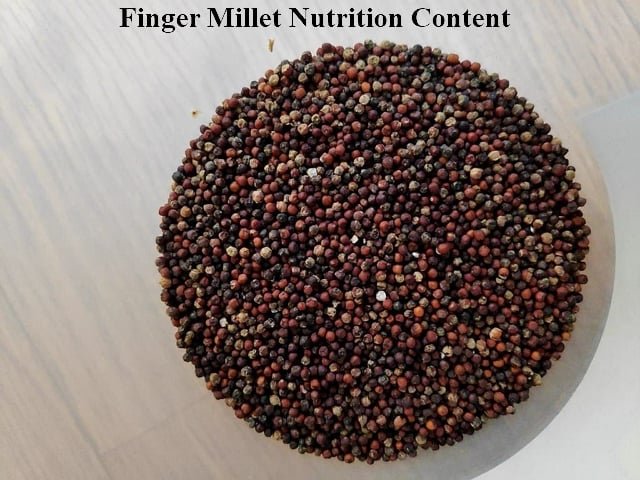
If we talk about the ragi nutrition content, it is one of the most nutritious cereals among all major cereals.
Finger Millet nutrition profile is something that will impress you. It consists of essential macronutrients like carbohydrates, fats, protein, and fibers in addition to the significant levels of essential micronutrients like vitamins and minerals. Specifically, it is the richest source of calcium. Its calcium content is even higher than milk, brown rice, wheat, or maize.
The B complex vitamins: thiamine, riboflavin, niacin, and folic acid are present in ample amounts in finger millet flour along with iron, magnesium, calcium, and phosphorus. Sodium and Cholesterol level is almost negligible which is good for heart wellness. Also, ragi/mandua contains vitamins C and E in considerable quantities. It boosts your immune, hair, and skin health.
Additionally, Finger millet is also enriched with essential amino acids like methionine and lysine. These amino acids are important for human health and growth.
As per the USDA (United States Department Of Agriculture) database, the nutrition values in a 100 g of finger millet flour are as follows:
| Moisture | 13.1 g |
| Energy | 336 kcal |
| Protein | 7.7 g |
| Fat | 1.5 g |
| Total dietary fiber | 11.5 g |
| Carbohydrate | 72.6 g |
| Minerals | 2.7 g |
Ragi/ Finger Millet Health Benefits
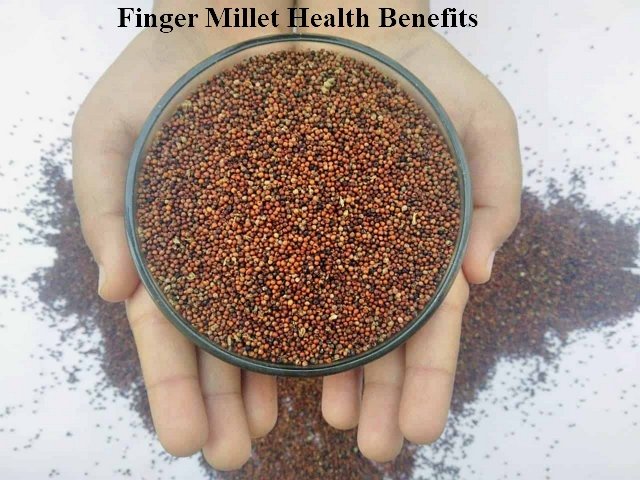
Now let’s talk about the finger millet health benefits. It offers multiple health benefits, thanks to its vast nutrition profile. Below mentioned are some important health benefits:
1. Control Diabetes and Prevent Gastro-Intestinal Disorders
Diabetes is one of the major health concerns in India. It’s raising the demand for complex carbohydrates with high dietary fiber content. Consuming finger millet on regular basis reduces the risk of diabetes and gastrointestinal tract disorders. It contains high dietary fiber, and its seed coat is richer in polyphenol.
High fiber content slows down the digestion process, which keeps the blood sugar levels low.
2. Ragi has Anti-Microbial and Anti-Cancer Properties
You will be surprised to know that finger millet has anti-microbial and anti-cancer properties. It acts against several bacteria:
1) Salmonella spp. that causes fever.
2) Bacillus cereus that causes food poisoning.
3) Staphylococcus aureus responsible for diseases like cellulitis, abscesses, and furuncles.
Additionally, the presence of antioxidants such as flavonoids, tannins, and phenolic acids makes it an anti-cancer food. Antioxidants help to fight inflammation in the body and prevent cancer.
3. Helps in Weight Loss
Our superfood Mandua/Koda is also known to help in weight loss. And it is a perfect food for people trying to lose weight. It is a low-fat cereal with high dietary fiber, which makes it the best choice. Also, it contains Tryptophan, an amino acid, which reduces appetite. The high fiber content and its slow digestion rate make you feel fuller and prevent you from consuming excess calories.
4. Reduce bad Cholesterol
Are you worried about your heart? No problem, Mandua/Koda prevents cardiovascular diseases by reducing bad cholesterol. The presence of amino acids like lecithin, methionine, and threonine protects against plaque formation within blood vessels and prevents excess fat deposition in the liver. This way, it protects you against stroke, hypertension, and other circulatory problems.
5. Boost Bone Strength
Finger millet is one of the richest sources of calcium, and it also contains vitamin D. It strengthens bones in growing children and restores optimum bone density in older people.
Additionally, Some studies have shown that it can alleviate osteoporosis symptoms.
6. Best for Pregnant and Lactating Women
If you are a pregnant or lactating mother, Sprout ragi grains overnight and consume them the next morning. It will benefit your health immensely. The high iron and calcium content in ragi stimulates milk production and balance hormonal activities in expecting women.
In addition to that, the vitamins, minerals, and amino acids present in ragi benefit both mother and baby.
7. Ragi Helps to Treat Anemia
Anemia (Iron deficiency) is very common in India. In India, it affects women and children every year. As per the NFHS data, 58.6% of children, 53.2% of non-pregnant women, and 50.4% of pregnant women were found anemic in 2016.
Mandua/Koda is a rich source of iron. It helps in blood formation and treats anemia.
Finger Millet Nutrition Healthy Recipes
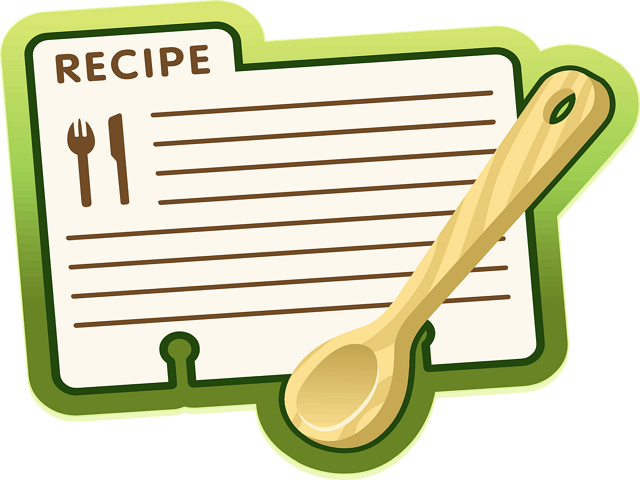
You can make some healthy recipes and mouthwatering recipes that also have finger millet nutrition in them. Below mentioned are some recipes that you must try at home.
1. Koda ki Roti (Mandua ki Roti)
Mandua ki roti (Koda ki Roti) is a famous Pahari recipe. It is a very simple and nutritious recipe.
Ingredients:
- Mandua ka Atta (Finger Millet Flour)- 300 gm
- Gheu ka Atta (Wheat Flour)- 100 gm
- Water- As per requirement
Mandua ki Roti Recipe:
- Mix mandua ka atta and gheu ka atta.
- Now add water to prepare the dough.
- Divide the dough into small-sized balls.
- Roll out the roti.
- Cook the roti on low flame on both sides.
You can serve mandua ki roti (koda ki roti) with ghee and gur, or you can also try it with sarso ki sabzi.
2. Koda Baadi
Koda baadi is another famous Pahari recipe.
Ingredients:
- Mandua/Koda ka atta
- Water/Milk
- Sugar/Gur (Jaggery)
- Ghee
Koda Baadi Recipe:
- Heat water in a pan and make it boil.
- Add sugar/gur to the boiling water.
- Once sugar/gur gets dissolved in water, start adding mandua ka atta.
- Add mandua ka atta in batches to avoid lump formation.
- Serve hot with ghee.
3. Mandua Cookies
Mandua cookies are healthy and nutritious alternative of maida cookies.
Ingredients:
Mandua ka Atta: 2/3 cup
Gheu ka Atta: 2/3 cup
Melted Butter: ½ cup
Powdered Sugar: ½ cup
Baking Powder: ¼ tsp.
Cardamom powder: 1 – 2 tsp.
Mandua Cookies Recipe:
- Roast mandua ka atta in a pan on a medium flame till aroma is released.
- Mix roasted mandua ka atta and sieved gheu ka atta in a bowl.
- Also, add sieved baking powder to the flour and gently mix it.
- Now add powdered sugar and cardamom powder to the mix.
- Pour melted butter and knead the dough.
- Preheat the oven at 170°C for 15 minutes.
- Divide the dough into small equal balls and flatten them.
- Place them on a greased baking pan and prick them with a fork.
- Bake them for 12-14 minutes at 170°C.
- When cookies are done, let them cool completely.
- Keep them in an airtight jar.
4. Ragi Malt
Ragi malt is a healthy and nutritious drink. It is also given to infants and young children as it is easier to digest.
Even though traditionally it is made with sprouted ragi flour and water or milk, you can also use regular ragi flour.
Ingredients:
- Sprouted ragi flour
- Water
- Gur(Jaggery)
Ragi Malt Recipe:
- Mix 2-4 tsp sprouted ragi flour in half cup water to form a smooth paste.
- Heat 1 cup water in a pan till it boils.
- Also, add 2-4 tsp jaggery powder to it.
- Now add ragi paste and stir continuously to avoid lump formation.
- Cook for 2-3 minutes.
- You can serve it cold as well as hot.
Conclusion
Finger millet is a super-cereal. It consists of high dietary fibers, proteins, iron, calcium, antioxidants, essential amino acid, vitamins, and essential nutrients. We hope this article gave you insight into the finger millet nutrition content, health benefits, and some healthy and nutritious recipes.
Thanks to finger millet nutrition content, you can give it to people of all ages. Also, it is easy to digest and control the blood sugar level, which makes it a perfect food for everyone. Though, everyone should take it in moderation to avoid any side effects.
We tried our best to provide you all the relevant information related to Finger millet. If you have any queries, please drop us a comment in the comment section.
Recommended Reading:
- Barnyard Millet/Jhangora/Sanwa- A Nutritious Food from Uttarakhand
- Fiddlehead Fern/ Lingdu Vegetable- Nutrition Facts and Health Benefits
- Buransh/Rhododendron arboreum- State Tree of Uttarakhand
- Barnyard Millet/Jhangora/Sanwa- A Nutritious Food from Uttarakhand
- Cleome viscosa/Jakhiya- A Secret Spice from Uttarakhand
- Stinging Nettle (Kandali)- Uses, Benefits, and Side Effects
- Horse Gram/ Gahat Dal/ Kulthi- An Amazing Super-Food

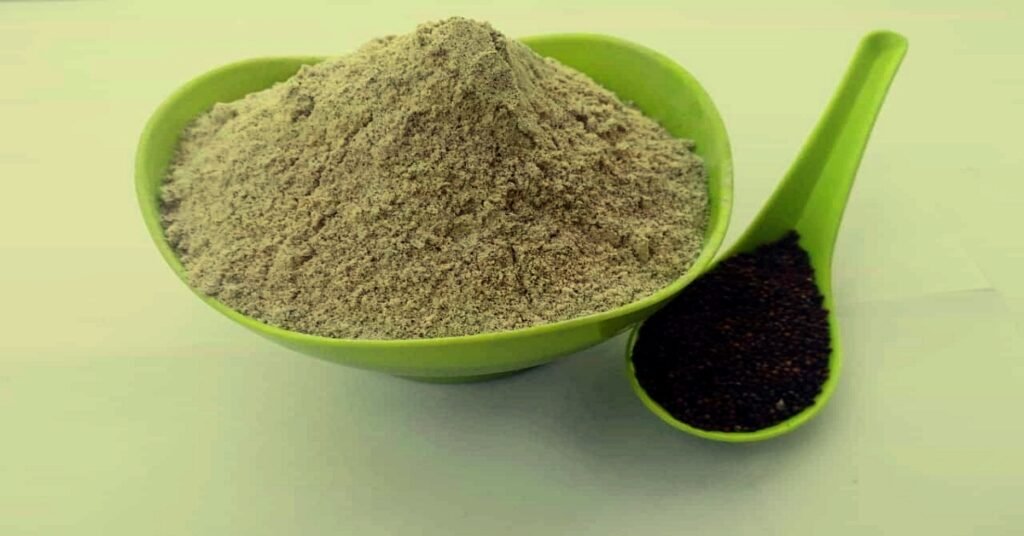
Its too helpful 👍🏻
Thanks
Very useful information. Great work! It is helpful in day to day life.
Thank you